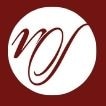Stephanie Laitala was diagnosed with a serious medical condition in April of 2009. Ten days later she was in surgery. In the coming months she underwent chemotherapy. Seven months later sales were up 20 percent at her company.
How did this happen without Laitala, president and owner of OWL Bookkeeping and CFO Services, at the helm?
“We didn’t have anything in formal writing, anything to account for my leave of absence,” admits Laitala.
But in 2008 Laitala implemented the Entrepreneurial Operating System (EOS), created by Livonia, MI-based EOS Worldwide. The EOS is a simple, complete, business management system that empowers leadership teams to run successful companies. She was introduced to the EOS through a fellow business owner and that person introduced her to Mike Paton, a Twin Cities-based Certified EOS Implementer.
“Owl wasn’t where I wanted it to be,” says Laitala. “We were growing, but by teeny amounts. The kind of growth you trip over, not the kind of growth entrepreneurs crave and I was really frustrated. Mike and I met and the approach clicked. It’s been the best thing we ever did.”
The EOS doesn’t just empower the business owner only, it can set clear direction for an entire staff within a small business.
“Everybody knew what they were responsible for,” says Laitala. “They knew exactly what their job was and exactly what my job and responsibilities were. Everything was covered because it was measured through the EOS.”
But planning for an unexpected absence goes far beyond having a system such as an EOS in place, says Laitala. There needs to be someone who understands invoice procedures, can do payroll and pay bills. Someone other than the business owner should have access to key system passwords and be able to serve as a signor on checks.
“What will shut down the doors is not having money come in and go out,” she says.
For Laitala, she was fortunate to work with a company full of accountants, so her operations manager handled the accounting and bookkeeping functions while she was out. For other companies, that might not be so easy.
“It’s such a good idea to have at least one other person be able to access the money,” says Laitala.
Having systems and procedures in place to prepare for an unexpected absence is critical for small business owners. Whether it’s a medical issue, accident, unexpected family or personal situation, an emergency can strike at any time. Without a plan a business can quickly lose key customers, projects can stall, and in some cases, an entire business can shut down.
“Planning ahead isn’t just necessary to handle the immediate effects of the boss being absent—the future of your company may depend on it,” says Paul McDonald, senior executive director of Robert Half Management in Westlake Village, California.
Even if you are able to weather the initial storm, if ongoing strategies are not in place, you risk suffering from the aftershocks. For example, employees may become burned out taking on extra responsibilities and begin looking to leave for new opportunities, or initiatives that were postponed may not be able to be jumpstarted quickly enough to take advantage of the corresponding business opportunity.
“A plan for what to do when the boss is absent prevents situations where no one knows what to do and ensures the company stays up and running,” adds McDonald.
One option is for the most senior manager to begin running the day-to-day operations, says McDonald. Very quickly, however, he or she should begin establishing new roles for others who can take on more responsibilities. The sooner these roles are established, the quicker the company can get back to as close to normal as possible.
“Make sure all key stakeholders understand the plan, can execute it and will be able to effectively communicate it to the rest of the staff,” says McDonald.
As president of Executive Group, Inc., a Loretto, Minnesota-based CEO peer group, Bill Mills works with over 75 CEOs across the country designing strategies that enhance personal life and freedom while producing sustainable growth and profits. About a decade ago he worked with the husband and wife owners of a Long Island, New York printing company where the couple was out extensively over several months tending to their ill son. The problem was especially acute since the son also worked at the company and was next in line to succeed his parents.
The experience reinforced his belief that small businesses should create an accountability chart, says Mills. This differs from an organizational chart and provides a roadmap that clearly describes the function, role and responsibilities of each individual throughout the organization.
“I think that in times of crisis people pull together very well and I think that’s what gets people through,” says Mills. “But by having an accountability chart in place, it provides a starting point.”
Mills works with CEOs to implement a program called the half day plan. The idea behind the plan is to get business leaders to design a program where over the course of the year they only commit to working 50 percent of their typical time. Each individual designs their own plan–perhaps working four hours a day, a few days a week or even one month on, one month off. At the end of the year they add up their hours and it needs to equal working only 50 percent of the time.
“Through a series of questions and planning, we break down the CEO’s job responsibilities and identify who in the organization, if the CEO suddenly couldn’t be there, should take over those key responsibilities,” says Mills. “This type of plan not only gives the CEO more freedom, it gives other employees more responsibilities and prepares staff for a possible crisis in case leaders are unexpectedly out for any period of time.”
Business owners—and all managers—need to establish succession plans, even for temporary absences, says, McDonald. “This will ensure the business can continue running while the boss is out. Identify a successor and begin training him or her immediately before an emergency arises.
“An added benefit of a strong succession program is that it can be motivational for the successors, placing a spotlight on their value to the company and enhancing retention of these star performers,” says McDonald.
Communicate with all constituents
Employees, vendors, suppliers and more importantly, customers, want to know that new leadership doesn’t mean drastic or immediate changes, says Margaret Spence, president and CEO of Douglas Claims and Risk Consultants, a West Palm Beach, Florida-based company that provides injury management solutions.
“Nothing could hurt a small business more than having the key person leave, retire or pass away and the biggest account walks away because they no longer feel attached to the business,” says Spence. “Remember, customers buy based on relationships that may have been built over time. The new person or team must quickly reach out to the customers and work on retaining them long-term.”
Since emergency can strike at any time, a contingency plan that includes key man insurance should be in place, says Spence. Key man (also called key person) insurance helps companies survive the loss of a key leader. This is especially important for a small business because the unexpected death of a business owner can dramatically impact the company, or even cause it to cease operating. Key man insurance covers the cost of consultants, executives, clerical, and administrative personnel to operate the business for a given amount of time.
“This will allow the business to hire temporary executives to run the company until long term decisions can be made,” says Spence.
As for Laitala, her health sabbatical helped her grow as a business owner.
“It made me realize more about how I was leading the company,” she says. “Sometimes getting away from the business allows you to see how a team is really doing. I am a visionary leader, but I realized the way I was running some things may have actually been hurting the business.”
Today, she leads a workshop called “How Cancer Saved my Business.” And her company has continued to grow 20 percent every year since 2009 while increasing from six employees to 37. The best part? She’s now five years cancer-free.
“I am fortunate we had the systems in place, but I work with some really great people and they ultimately were responsible for helping us pull through,” she says.
Read Article on Bank of America Website – Click Here





